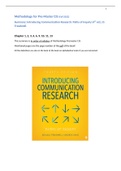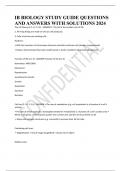Samenvatting
Summary Methodology for Pre-Master CIS (all important theory exam!)
Summary Methodology for Pre-Master CIS (Fall 2022) All important definitions are provided and explained. Important tables are provided. And the goals and a short extra summary of every chapter. This summary is in order of syllabus of Methodology Premaster CIS
[Meer zien]














